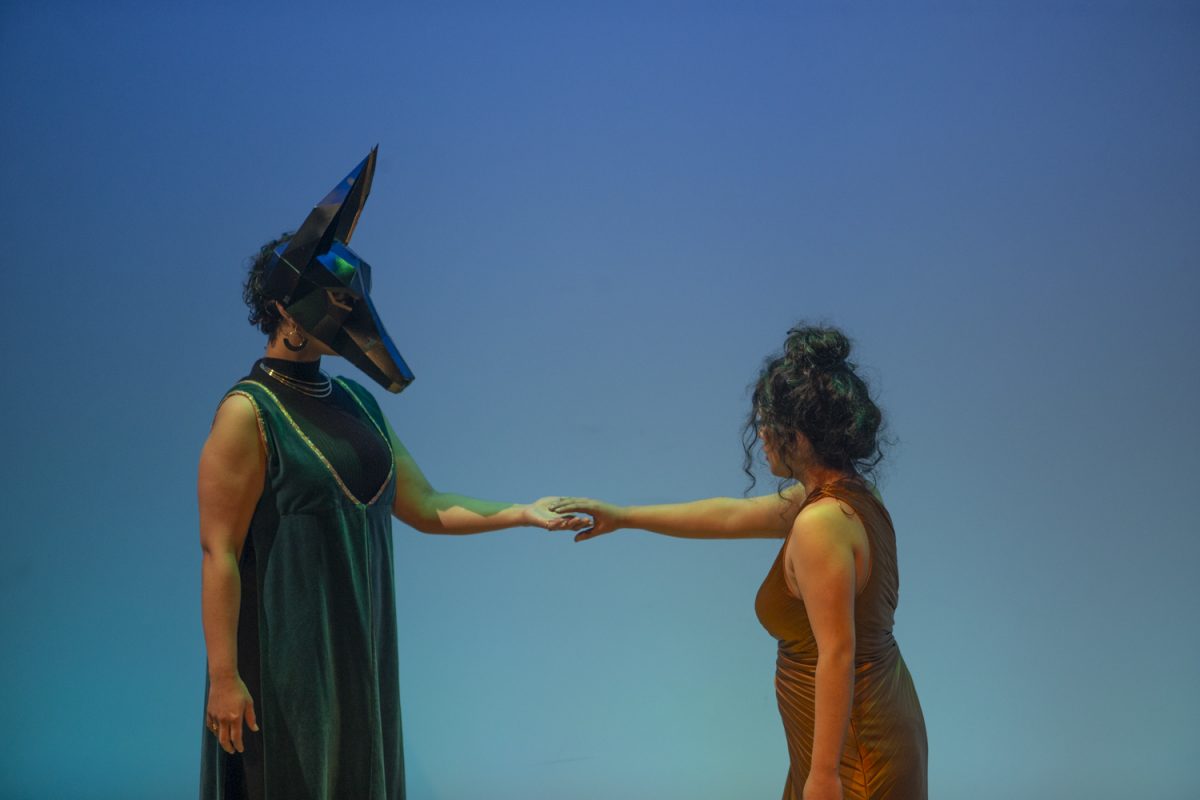Living through a frightening epidemic is more than a plot line for Jen Silverman.
In 2007, the playwright was living in a small, rural, southern Japanese town when the avian-flu outbreak hit.
“[The town was] ringed by hills, so there really wasn’t anywhere to go or anything to do — just wait it out and be careful,” she said. “Whatever ‘being careful’ meant to you.”
Silverman re-creates this terror in her new play, Yellow City, which will hit the stage as part of the Gallery Series today through Dec. 6 in the Theatre Building’s Theatre B.
The play is set in a post-pandemic wasteland in which four young 20-somethings face the aftermath of a deadly virus outbreak. Left to die amid rubble, gang fights, and destruction, the group’s only hope is the sound of a saxophone at sunrise, a hopeful entity they dub “the Yellow Man,” who they believe will save them.
Silverman has deep interest in the way humans interact with each other during a pandemic.
“You can’t know who’s infected, so your trust in the people around you is instinctively replaced by wariness and fear,” she said. “Physical contact we take for granted, like a handshake or a kiss, automatically carries a new danger.”
Director Anthony Nelson (who recently directed the UI Mainstage production The Book of Liz) experimented with anime-like movement among characters.
“I’ve encouraged the actors to think about their bodies differently,” he said. “They’re stripped away from modern technology, so I want them to revert to cold-blooded, primal instincts.”
Actors Sarah Helt, Kyle Niemer, Nigel Brown, and Megan Norman play Rat, Lynx, Swan, and Ava, respectively, and their movements reflect these creatures.
“Especially in the scenes between Lynx and Rat, there’s this kind of animal-energy, this cat-and-mouse danger, that’s exciting to me and feels right for the characters,” Silverman said.
Yellow City takes cues from both past and present events. She said she pulled ideas from 14th-century journals about the bubonic plague and sketches that show Death dressed in a fancy cloak, dancing through town.
“There’s a certain cynical, morbid sense of humor that kicks in, where laughter is the only reaction that will keep you from losing your mind,” she said.
Amid the recent H1N1 outbreak and heated health-care debate, the play has relevance.
“I’m fascinated and unsettled by how we, as a country, have reacted to diseases such as SARS, bird flu, and H1N1 — the near-hysteria in the media, the finger-pointing, the urgent desire to single out a country or an ethnicity,” Silverman said. “Those reactions make me think that it isn’t so far-fetched to imagine people building these huge barriers and guard towers around an infected city and leaving everybody inside to die.”
Nelson said that while the play is scary, it does more than create a depressing atmosphere in which characters are forced to live in subway cars and urinate in cans. He said the plot sparks interesting conversations about what it would be like to live without everyday luxuries.
“Disease makes everybody feel helpless, especially disease for which vaccines haven’t yet been created, and that’s something that, as a country, we’re not accustomed to feeling,” Silverman said.
“Maybe disease is one of the only things left that can really make a ‘First World’ country feel helpless.”






